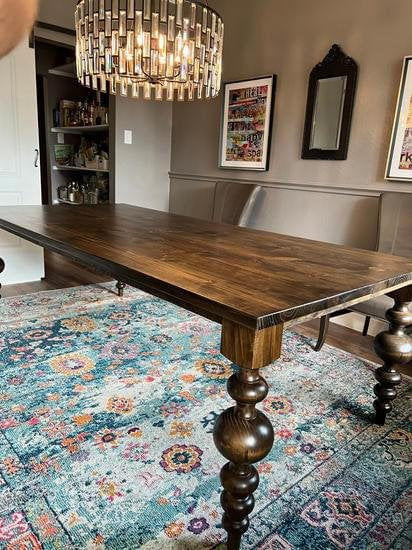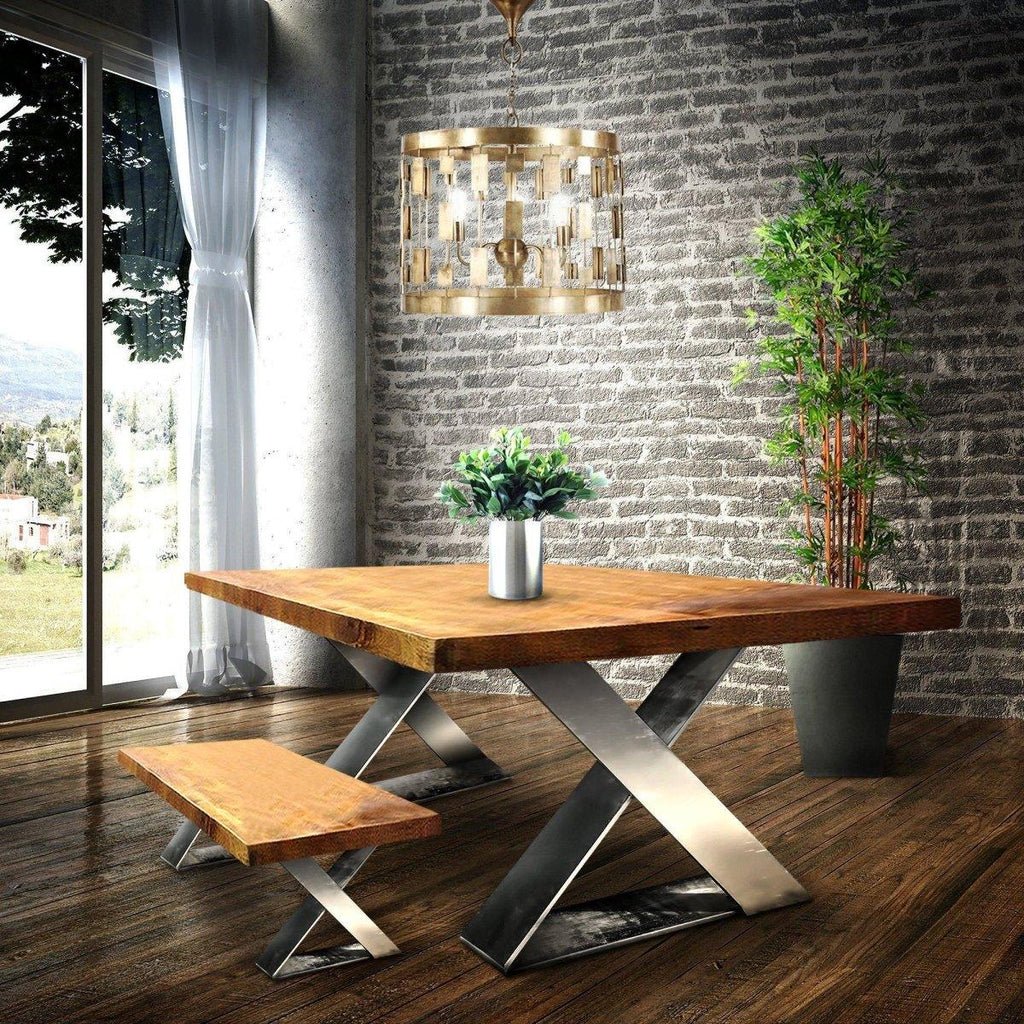Creative Ideas for Replacing or Refurbishing Your Dining Room Table Legs
Creative Ideas for Replacing or Refurbishing Your Dining Room Table Legs
Blog Article
From Standard to Modern: Discover the Suitable Dining Area Table Legs for Your Style
While classic layouts such as cabriole and transformed legs evoke a sense of timeless refinement, modern designs like hairpin and geometric alternatives provide an opportunity for striking visual passion. As you consider these elements, the concern stays: exactly how can you perfectly incorporate these varied leg designs to produce an unified dining experience?
Understanding Table Leg Styles
The selection of eating space table leg designs can significantly affect both the aesthetic appeals and capability of the room. Each leg design contributes one-of-a-kind functional functions and aesthetic aspects, dealing with diverse design choices and use requirements. Comprehending these designs is critical for choosing the best eating table that straightens with your total interior decoration vision.
For example, conical legs supply a clean, classic look that can improve a room's sophistication, while pedestal bases supply stability and make best use of legroom, making them excellent for smaller sized areas. Barrette legs, a characteristic of mid-century contemporary design, introduce a commercial style, enabling for an airy, open feeling. Likewise, trestle legs evoke rustic beauty, providing robust support and a sense of eternity.
Moreover, the selection of materials plays a significant duty. Wood legs can bring heat and texture, whereas steel choices often share a smooth, contemporary ambiance. Eventually, recognizing table leg designs is crucial for developing a natural eating location that mirrors personal design while making sure practicality and convenience. By attentively taking into consideration these components, you can boost both the visual and practical allure of your eating area.
Conventional Table Leg Options
When choosing dining space table legs, typical alternatives usually personify classic elegance and craftsmanship. These designs show a rich heritage and a dedication to top quality, making them suitable for those that appreciate classic appearances.
Among the most renowned conventional leg styles is the cabriole leg, characterized by its graceful rounded form. This style typically features ornamental makings and is most frequently found in Queen Anne and Chippendale furnishings. Another prominent option is the turned leg, which boasts a series of smooth, rounded shapes that provide a timeless appearance while maintaining security.
Furthermore, the straight leg, while easy, uses a basic and strong structure that can mix effortlessly with a selection of tabletop designs. For those drawn to ornate describing, claw-and-ball feet legs evoke a feeling of grandeur and can serve as a sensational centerpiece in any kind of eating area.
Finally, pedestal bases, although not strictly legs, offer an alternative typical option that permits sufficient legroom and can be wonderfully sculpted. Each of these traditional leg designs adds to the general ambiance of a dining-room, marrying function with aesthetic charm.

Modern Table Leg Layouts
Modern table leg designs supply a varied array of designs that emphasize clean lines and ingenious materials. These styles often focus on capability while acting as striking focal factors within a dining area. Minimal appearances are prevalent, with legs crafted from materials such as metal, glass, and engineered timber, which add to a contemporary and airy feel.
One prominent style is the barrette leg, defined by its slender, conical framework that provides security without frustrating the tabletop (dining room table legs). This design is often located in mid-century modern furniture and can effortlessly complement numerous eating table forms. One more trend is using geometric shapes, where legs might tackle unbalanced or angular kinds, adding aesthetic passion and a touch of artistry

Mixing Styles for One-of-a-kind Spaces
Frequently, property owners seek to develop one-of-a-kind eating areas that show their personal design by blending numerous design elements. This strategy permits for the consolidation of diverse looks, resulting in a harmonious yet distinct setting. For example, pairing a rustic wood table with streamlined, contemporary metal legs can produce an eye-catching contrast that boosts the space's general charm.
In addition, integrating vintage table legs with contemporary table tops can stimulate a sense of background while maintaining a modern perceptiveness. Such combinations not just showcase private taste yet likewise encourage imagination, enabling property owners to curate a space that feels my review here both personal and welcoming.
Shade plays an important role in this mixing process; picking table legs that enhance or contrast with the existing color pattern can improve visual passion. As an example, whitewashed legs can soften he has a good point the daring of a dark table surface area, creating a well balanced visual.
Tips for Selecting the Right Legs
Selecting the right table legs is necessary for attaining both performance and visual allure in your dining area. Begin by thinking about the total style of your area. Conventional setups gain from legs that feature detailed carvings or transformed styles, while contemporary spaces might call for sleek, minimalist styles.
Following, evaluate the elevation and security of the legs. dining room table legs. Typical table vary in between 28 to 30 inches in elevation, so guarantee the legs complement this dimension for comfort. Furthermore, robust materials, such as wood or steel, can improve security and longevity
Evaluate the leg form also-- alternatives consist of right, tapered, or stand styles. Straight legs offer a timeless look, while conical legs can include a touch of sophistication. Pedestal bases offer sufficient legroom and are ideal for smaller sized rooms.
Verdict
In recap, choosing the excellent eating room table legs needs cautious consideration of both conventional and modern-day designs. By integrating leg style, elevation, and product with the total design, a cohesive and inviting environment can be attained.
The selection of eating area table leg styles can considerably affect both the visual appeals and functionality of the space. Inevitably, understanding table leg styles is important for developing a cohesive eating location that shows individual style while ensuring practicality and comfort.One of the most renowned standard leg styles is the cabriole leg, characterized by its stylish curved shape. Straight legs provide a traditional appearance, while tapered legs can include a touch of style.In recap, picking the excellent eating room table legs needs mindful consideration of both typical and modern styles.
Report this page